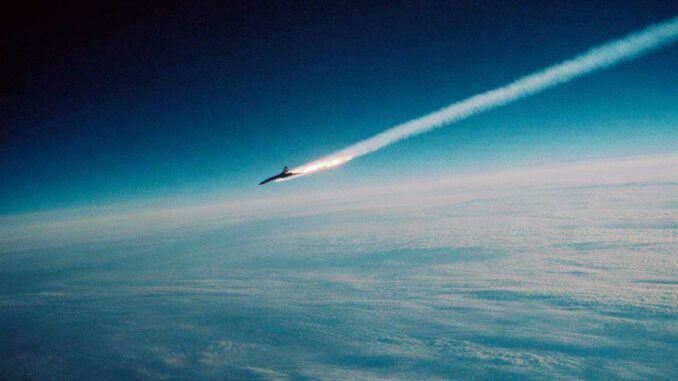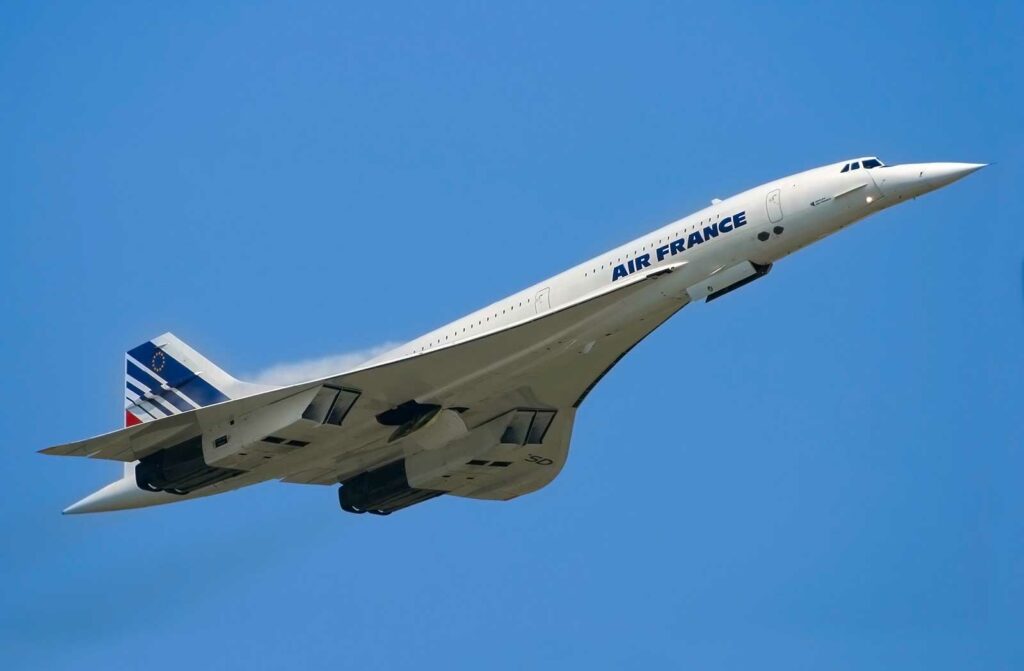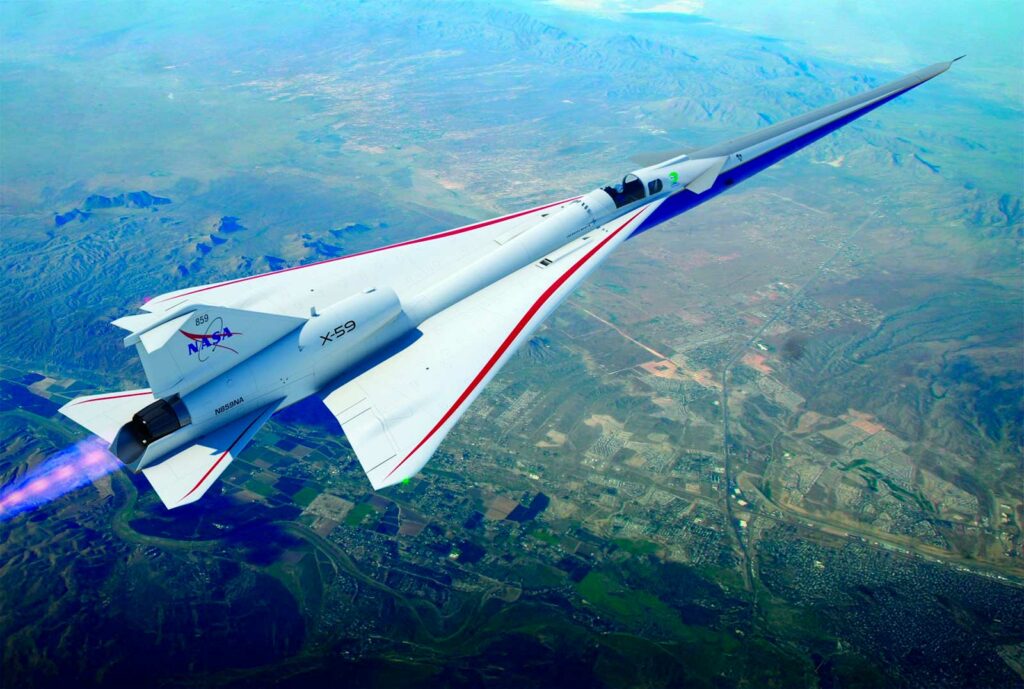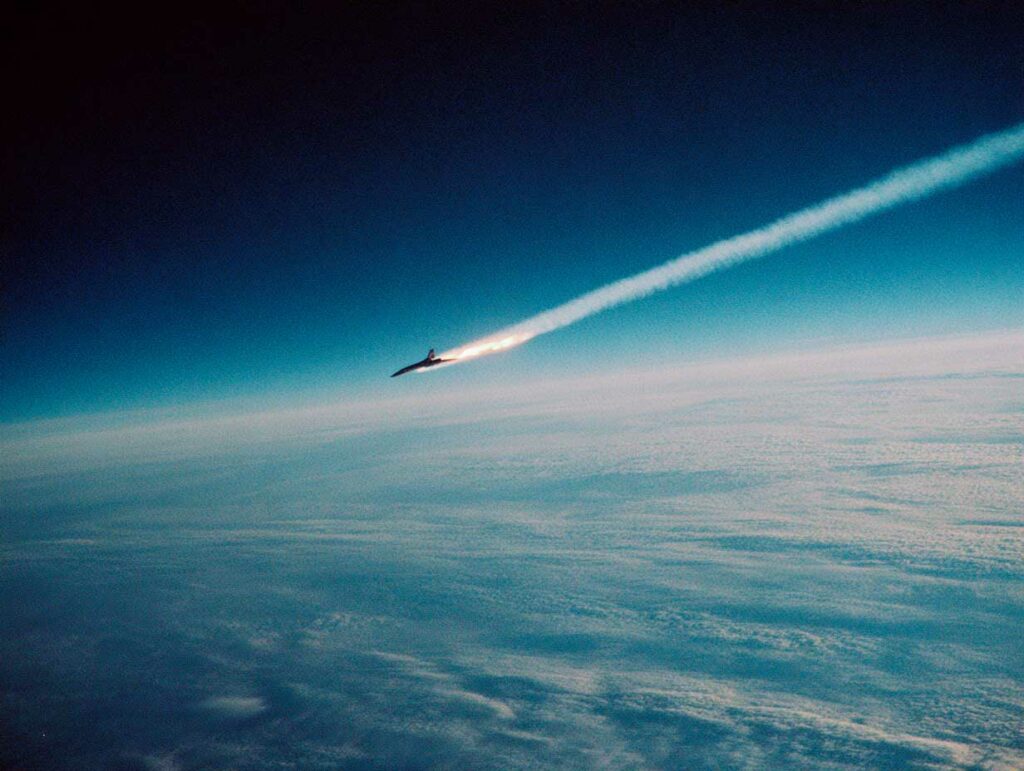
Technical exploration of a modern supersonic aircraft: propulsion, aerodynamics, noise, fuels, costs, ongoing projects, and the feasibility of a 21st-century Concorde.
Summary
Recreating a “21st-century Concorde” requires overcoming the historical limitations of the Concorde (costs, noise, fuel consumption, regulations) by incorporating recent innovations: engines without afterburners, advanced composite materials, sustainable fuels, supersonic boom reduction design, modern flight controls, and adaptive structural controls. Several players (Boom, NASA/Lockheed with the X-59, COMAC, Aerion in the past) are working on supersonic or silent aircraft. The technological challenges remain enormous: thermal control, landing noise, certification, logistics, development costs (several billion dollars), and a passenger market limited to high fares (similar to or higher than business class). . While the concept remains relevant at the dawn of the 22nd century, part of the future could belong to hypersonic or space systems (suborbital spacecraft). The challenge: to revive commercial supersonic transport in a profitable, sustainable manner that is accepted by regulators, or to switch to other ultra-fast modes of transport.
The legacy of Concorde: successes and failures
Structural errors to be corrected
Concorde was a technical feat: cruising speed close to Mach 2, altitude around 18 km (60,000 feet), heat-resistant structures, limited composite materials, turbofan engines with afterburners, etc.
But it suffered from several flaws:
- Excessive fuel consumption: per passenger-kilometer, the Concorde burned much more fuel than a conventional subsonic aircraft, in an era of cheap fuel but growing environmental constraints.
- Supersonic noise (sonic boom): the Concorde could not fly at Mach 2 over land without generating a loud sonic boom, which prohibited it from flying on many routes.
- High operating costs: maintenance, wear and tear, specific parts, frequent thermal cycles, engine constraints.
- Limited capacity (around 100 passengers) and very high ticket prices—reserved for a niche market of travelers.
- An accident in 2000, caused by a metal strip on the runway, exacerbated the media and economic backlash.
- Regulations and the environment: emissions, noise on landing, and increasing regulatory constraints were not fully anticipated.
For a new project, each historical shortcoming must be addressed while adding 21st-century technologies.

Necessary innovations: propulsion, aerodynamics, materials, fuels
Modern propulsion: no permanent afterburners
One of the major advances expected is the elimination or reduction of continuous afterburners during cruise flight, to limit fuel consumption and noise. Instead of high-burning engines, the search is on for supercruise turbofans (capable of Mach > 1 without afterburners) or hybrid architectures.
Boom is developing an engine called Symphony, a moderate dual-flow turbofan, aiming for supercruise at Mach 1.7 without afterburners. This engine will have to cope with extreme temperatures, pressures, and heat rejection.
Air intakes become critical: at high speed, the flow must be slowed down, compressed, and guided to the compressor without masking any instability. Variable geometry, inverters, and adaptive flaps are required.
Heat dissipation is a major challenge: engines and surfaces generate heat, so efficient cooling systems are needed, often using fuel as a heat sink.
Finally, the use of additive manufacturing, high-temperature alloys, or advanced ceramic materials can help make engines lighter while withstanding extreme stresses.
Advanced aerodynamics and sonic boom control
Supersonic flight aerodynamics present challenges: drag, shock waves, and transonic instabilities must be minimized. The Concorde had a thin ogive (delta) wing, but this type of wing performs poorly at subsonic approach speeds. A compromise is therefore needed: double-profile wings, wing morphing, adaptive surfaces, or active control principles.
Reducing the supersonic boom is a key issue. The concept of “Mach cutoff” (or flight without an audible boom) consists of designing an aircraft shape and trajectory such that shock waves do not converge towards the ground with audible intensity. The Lockheed/NASA X-59 demonstrator aims to test this concept, generating a low “thump” (around 75 EPNdB) on the ground instead of a powerful bang.
Recent studies show that wings with porous tailplanes, perforated trailing edges, or damping surfaces can attenuate transonic buffeting, aid stability, and reduce noise.
Controlling shock zones, pressure gradients, and parasitic shock waves requires advanced CFD simulations, wind tunnel testing, and iterative adjustments.
Smart materials and structures
A modern supersonic aircraft must be lightweight but capable of withstanding severe thermal and mechanical cycles. Composite materials (carbon fibers, reinforced composites, advanced thermoset matrices) are essential, with metal-ceramic reinforcements for critical areas (nose, air intakes, leading edges).
Structures can be active or adaptive: morphing wings, controlled surfaces, piezoelectric actuators that adjust the shape in flight according to speed or altitude.
Thermal integration (heat management) must be considered in the structure (parts that can serve as radiators or dissipate heat flows).
Onboard instrumentation (sensors, diagnostics, control algorithms) must be an integral part of the structure (onboard sensors, structural health monitoring).
Fuels and sustainability
The Concorde used conventional fossil fuels. Today, to be compatible with environmental pressures, such an aircraft will have to use sustainable aviation fuels (SAF) or low-carbon synthetic fuels.
However, SAFs are still rarely available in sufficient volumes and are expensive. Massive industrial chains will be needed to produce them at a reasonable cost.
Another avenue is green “e-fuel” (synthetic hydrogen, fuel based on captured CO₂) or liquid hydrogen used directly as fuel. Hydrogen imposes storage constraints (density, cryogenics, insulation).
Finally, overall energy efficiency (optimization of propulsion cycles, drag reduction, heat recovery) must be maximized to keep the cost per passenger viable.
What current companies and projects are doing
Boom / Overture
Boom Supersonic is undoubtedly the most visible private player. Its XB-1 demonstrator recently broke the sound barrier (reaching Mach 1.1) in its tests, marking a significant milestone.
The future commercial aircraft is Overture, designed to cruise at Mach 1.7, carrying 60 to 80 passengers over approximately 7,870 km (approximately 4,250 nautical miles).
Boom forecasts a market for more than 1,000 supersonic aircraft by 2035, with potential transatlantic flights taking 3 hours and 40 minutes compared to 6 to 7 hours today.
The Symphony engine is under development, with partners such as Kratos, GE Additive, and StandardAero. It must be capable of supercruise and burn sustainable fuel.
However, Boom still has to overcome technical, certification, financing, supply chain, and noise regulation challenges.
NASA/Lockheed: X-59 Quesst
The X-59 project (also known as QueSST) is a demonstrator built by Lockheed Martin for NASA to test low-boom shapes and quiet supersonic flight technologies.
It is intended to convince regulators (ICAO) to reconsider restrictions on supersonic flight over land. The X-59 aims to produce a perceived noise level on the ground of ~75 EPNdB (“thump”) compared to ~105-110 EPNdB for the Concorde.
Its first test flight is expected in 2025. The engine used is a modified GE F414. It is designed to fly at Mach ~1.4 at an altitude of ~16 km.
If the X-59 proves successful, it could pave the way for more widespread supersonic use over land, which would tip the economic equation.
COMAC (China)
COMAC has unveiled a supersonic aircraft project (Mach ~1.6) that aims to surpass the Concorde in terms of quietness and range.
China’s ambition is to become a major player in supersonic transport to compete with the West. The positioning is also strategic (prestigious technology).
This project is still at the concept or planning stage, with many financial and technical uncertainties in the coming years.
Other projects (past, canceled, or on hold)
- Aerion: an American civil supersonic company that promoted “muffled boom” technology. However, it went bankrupt in 2021 due to a lack of funding.
- Syncom (JAXA / Japan): Japan’s “Next Generation Supersonic Transport” aimed to advance towards quieter supersonic aircraft.
- Other programs such as SST Quiet, High Speed Civil Transport (USA) and Soviet projects (Tu-244, Tu-344) did not come to fruition due to financial or regulatory constraints.
These projects illustrate the risks of excessive costs, delays, limited markets, and regulatory resistance.

Cost, market, and fare estimates
Development budget
A modern supersonic project requires billions of dollars for research, development, flight testing, certification, infrastructure, and industrial supply chains.
For example, a single demonstrator can cost several hundred million dollars. Boom has invested several hundred million dollars in the XB-1.
Certification, flight testing, acoustic testing, and compliance with standards (FAA, EASA) require additional years and costs.
The development of specialized engines (such as Symphony) must also include test benches, prototypes, and validations.
Airport infrastructure (reinforced runways, airports adapted to SAF fuel, noise controls) also represents a cost.
Ticket prices
Boom aims to make tickets for Overture comparable to those for business class on transatlantic routes.
With high operating, maintenance, and fuel costs, margins must be offset by premium pricing, high payload, and high aircraft utilization (many flight hours per year).
The target market will remain a small customer base (corporate, VIP, business), not the general public.
Potential market and volume
Boom estimates a market of more than 1,000 supersonic aircraft by 2030–2035.
But to support the cost of development, there must be a sufficient operator base and frequent use (high profitability per flight).
Competition from ultra-efficient subsonic aircraft (with modern engines and optimized fuselages) is a barrier: if the time difference does not justify the additional cost, demand may remain low.
Regulations on supersonic flight (ban over land, noise, emissions) restrict possible routes to those over oceans, which limits the usable network.
The “optimistic” scenario assumes increased regulatory acceptance (via demonstrators such as the X-59) and the gradual adoption of sustainable fuels on a large scale.
Feasibility, risks, and realistic timeline
Technological gaps to be filled
Much progress has been made, but the challenges remain enormous: thermal control, noise, certification, sustainable fuel costs, and social acceptability.
The simultaneous integration of multiple innovations (new engines, composite materials, active control, bang reduction, SAF) increases the risk of negative interactions.
The timeline is tight: the first aircraft could arrive in the late 2020s or early 2030s if all goes well, but numerous delays are likely.
Economic and commercial risks
A supersonic company must secure substantial orders from the outset to offset development costs. If pre-orders do not materialize, the project may fail.
The cost of fuel (even renewable fuel) remains a critical factor: if fuel becomes expensive, the economic advantage diminishes.
Subsonic competition continues to evolve: more efficient long-haul aircraft, optimized fuselages, and ultra-high-efficiency engines could reduce the time or cost gap.
Environmental regulations may change (CO₂ taxes, noise restrictions, quotas) and make the business model difficult.
Plausible horizon
A realistic “21st-century Concorde” could emerge by 2030–2040, starting with premium oceanic routes between major cities.
Then, if the concept is proven, routes could be extended subject to regulatory conditions, or even a partial lifting of supersonic flight bans (via “low boom” technologies).
By 2050–2100, these aircraft could be integrated into a supersonic network complementary to conventional subsonic aircraft.
But beyond that, the advent of hypersonic (Mach > 5) or suborbital transport could render the conventional supersonic concept obsolete for certain ultra-fast long-haul routes.

The future and alternatives: towards the 22nd century
Hypersonic and suborbital
Hypersonic transport (aircraft, gliders, rockets) would make it possible to cover greater distances in less time. But it imposes extreme constraints: aerodynamic heating, structural control, fuel costs, high thrust.
Concepts for suborbital or “point-to-point” aircraft (city-to-city transport via quasi-space flight) are being studied, but remain in the research phase for now.
The challenges will be reducing launch costs, reusability, passenger ergonomics (acceleration, comfort), safety, and space regulations.
Competition from terrestrial or other systems
Technologies such as very high-speed trains (hyperloop, vactrains) can compete with supersonic aircraft over certain distances (less than 6,000 km).
Futuristic transport systems (pressurized tunnels, vacuum tubes) could offer competitive alternatives without the constraints of the atmosphere.
Flying cars or high-speed electric aircraft could become complementary for short or regional segments, reducing the demand for supersonic aircraft.
Long-term relevance?
A new Concorde must be justified by a net time advantage, while remaining economically viable, acceptable to regulators, and environmentally sustainable.
If the technological challenges are overcome, this type of aircraft could still thrive in the 21st century. However, the arrival of more radical modes of transport could supplant the classic supersonic concept before it has had a chance to fully establish itself.
War Wings Daily is an independant magazine.